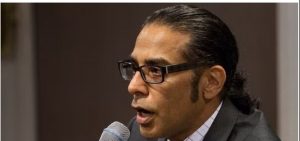Gujarat,
the home state of Prime Minister Narendra Modi, is going to polls. The Election
Commission is scheduled to announce the poll dates soon and the Bharatiya
Janata Party (BJP), the ruling party in both the Centre and the state, will
look to capitalise on what is perhaps its strongest hold in the country.
When
Narendra Modi was the chief minister of Gujarat from 2001 through 2014, till he
became the Indian prime minister, Gujarat was touted as the shining glory of
India’s economic successes. Behind Modi’s reputation for running an efficient
administration, stood the ‘Gujarat model’ as a testament.
Now, eight
years since Modi has left the state, Gujarat makes fewer headlines. But the
larger narrative in the western Indian state that is home to some of India’s
biggest capitalists is that the same party in the Centre and state is
beneficial to the citizenry. It is this model of having the same party in power
in both the state and Centre is what is called among sections of the Indian
media the double-engine government.
Nearly 27%
people in Gujarat favour the idea of a double-engine government, a recent
CSDS-Lokniti survey has found. This is a steep rise from 16% in the 2017
Assembly elections. The survey further found that even people who are generally
dissatisfied with the Union government continue to support the idea of a
double-engine government.
Meanwhile,
support for the Opposition, which in Gujarat primarily comprises the Congress, has
been diminishing.
The survey
found that states with incumbent BJP governments had a greater proclivity
towards a double-engine regime than states with other parties in power.
While 27%
support the idea of the double-engine government in Gujarat, in Assam the
support is as high as 41%. In Goa, India’s smallest state, 34% respondents supported
the idea of a double-engine government. Uttar Pradesh had 31% in support and
Uttarakhand 33%.
The numbers
tell a significantly different story in states ruled by other parties. In West
Bengal, 33% respondents disagree with the idea that a double-engine government
system works better for the citizenry. The numbers are starker in Kerala and
Tamil Nadu. In Communist-led Kerala, 54% respondents voted against the idea of
a double-engine government while in Tamil Nadu, the number was 40%.
The survey
further found that rich urban voters were more geared towards the idea of a
double-engine government than the rural poor.







